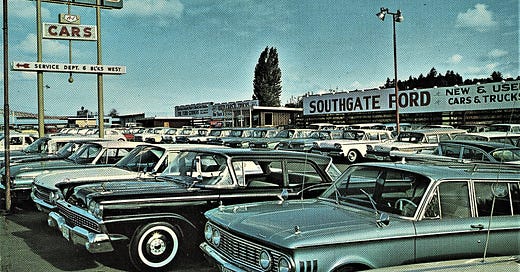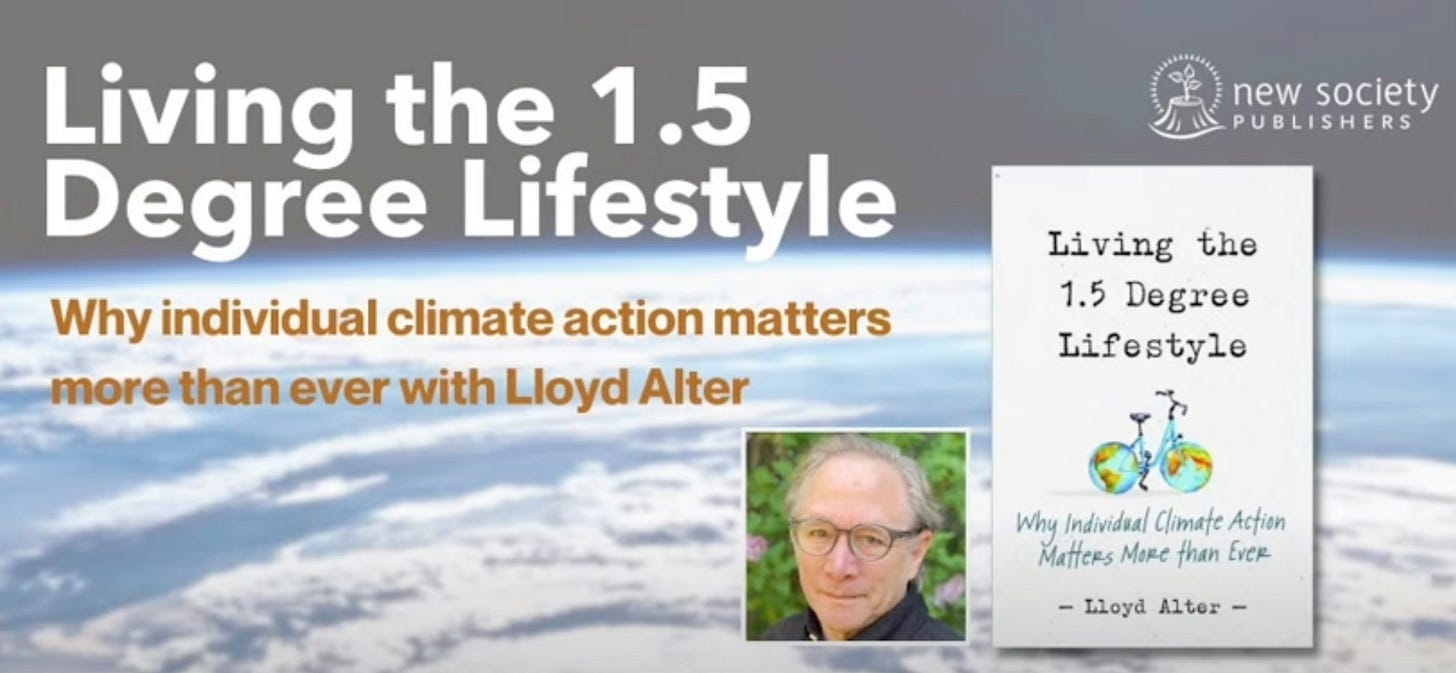Will tariffs drive people to take transit or get a bike?
They are going to drive up the costs of owning and operating a car.

Taras Grescoe writes on his great High Speed website that the cost of car ownership is about to go way up, thanks to Donald Trump’s tariffs. He muses:
Has Donald Trump declared a War on Cars? That's the name of a podcast, well-known to urbanists and transportation types, inspired by the late Toronto mayor Rob Ford's paranoid whining about streetcars and bike lanes robbing street-space from drivers. When Trump announced a 25% tariff on imported automobiles, and many imported auto parts, some people on social media—I was one of them—jauntily posted: "Donald Trump, welcome to the war on cars."
Grescoe is suggesting that as cars get more expensive, the alternatives like transit and cycling will become more attractive, and for many may be the only affordable means of getting around. But Grescoe only looks at the cost of car ownership; a few years ago on Treehugger I looked at the broader costs of driving cars, and found that the car itself is just the starting point. I will try and do an update here, using USA numbers since that is what I started with.
Direct Costs: Vehicle cost
These were already considerable, thanks to higher interest rates and more expensive bulked-up cars and light trucks. According to Cox Automotive, the average car payment in January 2025 was $755 per month; the Budget Lab at Yale University projects that tariffs will increase car payments by 13.5% to $856 a month or $10,283 per year.
Maintenance
Anyone owning a Toyota or Mercedes might well see a significant increase in annual maintenance costs, which are already way up since I did my last spreadsheet; according to the Wall Street Journal, they are up 27% in the last three years. let’s use the 13.5% number.
Insurance
According to USA TODAY, “The national average cost of full-coverage car insurance could increase by 8% by the end of the year with the tariffs in effect, according to an analysis by Insurify. The average insurance premium would go from $2,313 to $2,502.
Gasoline
It’s way up since I did my last analysis, both because of the price of gas increasing and the effective MPG going down. The AAA estimates it to be $2295 now, but it may well drop as a Trump-induced recession kicks in.
Indirect Costs
These include the road costs not covered by the road tax (currently fuel taxes, tolls and fees only cover 36% and the rest is covered by everyone’s taxes whether they drive or not) Free parking, estimated by the late great Donald Shoup to be an annual subsidy for parking built into the costs of goods and real estate is $127 billion per year, policing, about a third of which can be attributed to dealing with cars), Sprawl, as Todd Litman explained,
“An abundance of credible research indicates that sprawl significantly increases per capita land development, and by dispersing activities, increases vehicle travel. These physical changes impose various economic costs including reduced agricultural and ecological productivity, increased public infrastructure and service costs, plus increased transport costs including consumer costs, traffic congestion, accidents, pollution emissions, reduced accessibility for non-drivers, and reduced public fitness and health.”
There are also “quality of life” costs, calculated by National Highway Traffic Safety Administration(NHTSA), the value of lost years of possibilities and opportunities; I explained in more detail in The True Cost of Car Ownership: It's Worse Than We Thought.
All of these indirect costs are going to be higher than when I last did the spreadsheet, but I am not going to go through all the calculations again; I am just going to increase the numbers by the rate of inflation since 2021- 18%.
The indirect costs are also paid by every citizen, whether they drive or not, so I have divided the total of the indirect costs by the number of citizens rather than the number of cars, to see what everyone who walks, cycles, or gets pushed in a pram or wheelchair pays.
Seriously, when you look at these numbers, you have to wonder why anyone drives. Except in North America, most people don’t have a choice; there are few alternatives to driving. It is particularly hard on those who earn less; in an earlier post I noted that The percentage of net income that goes to supporting the car is outrageous: for the extremely wealthy it is only 1%, for mere millionaires, it is 13%. But for an unskilled worker it is 36% for an economy car, and if they go out and buy an F-150, as many workers do- it rises to 69% of their annual income. They have to somehow suck upfront the direct costs and everyone else will have to keep subsidizing them. As Taras Grescoe concludes:
Shifting modes—to transit, to bicycles, to walking—may be an option for some people, and that will be a good thing for those who can manage it. But in the North America we've built for ourselves, most people are going to be hung out to dry if they don't have car keys in their pockets. Which means that, even if you look at the situation cynically, there's no up-side to Trump's unofficial War on Cars. It's going to bring a lot of pain, to people who can ill afford any more pain in their lives. The ones who will suffer the most, strange to say, will be the very people who voted for the chief Bozo in the Clown Car.
I have written previously about this:
The Lifetime Cost of a Small Car Can Be $689,000 A new German study looks at the direct and externalized costs and they are scary.
Fuel Prices Are High But the True Cost of Filling Your Tank Is Higher So much of it is hidden and paid for by everyone, not just the drivers.
The True Cost of Car Ownership: It's Worse Than We Thought They go up a lot if you account for the lost quality of life.
Special Offer!
I do not want to put up a paywall on this site, but it provides a meaningful portion of my income. So here’s a limited time offer: I will send a signed copy of the print edition of “Living the 1.5 Lifestyle” to anyone in the USA or Canada who signs up for a one-year subscription (C$50, cheap at about US$34.95 )







50 years ago, in his book Energy and Equity, Ivan Illich did a similar calculation. The result was that the average American worker, taking miles driven/year divided by time spent working to earn the costs of those miles, achieved a speed of 5 miles/hour. Which Illich pointed out was just 2 mph faster than the poorest of humanity, walking.
I just love how the moment is now for your many years of tracking and thinking about this, Lloyd.
It will be fascinating to see how this shifts U.S. consumer behavior. It’s similar to the dairy/meat safety/price shift happening here now - will that be the reason that people start to veer more plant-based?
These solutions have been sitting there, right in front of us, this whole time.
Thank you for your continuing wonderful work!